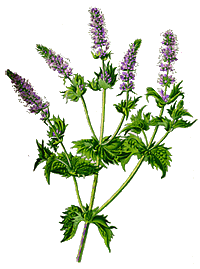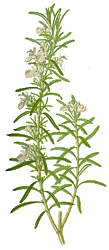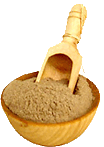Plant dyes and colours
We are all familiar with henna, a plant which colours hair orange. Henna is also used as body paint. However, there are many plants and roots which give other colours and these can be combined to give a variety of shades.
How does it work?

The basic process is that the plant is ground to a fine powder, with different plants being used to give different colours. The appropriate amount of powder is mixed with hot water and a drop of vinegar is added (this helps the mixture to combine). When the mixture has the consistency of yoghurt, it is applied to hair with a brush. After a certain time, the dye is rinsed off.
Plant dyes are suitable for everyone. It is particularly appropriate for pregnant women and those who have undergone chemotherapy or radiotherapy. They are also ideal for those with allergies or sensitive skins.
Colour shades
All sorts of shades can be achieved, from light to dark. Take note that the initial colour of the hair will have an effect on the final colour of the hair. Thus, hair which was initially light colour and hair which was initially darker will have different final colours when given the same hair colour treatment.
Grey hair has particular requirements. To darken grey hair completely, two consecutive stainnings are needed. On the other hand, the advantage with grey hair is that it can be coloured with different blond shades. Depending on your hair, this results in beautiful, natural looking highlights.
Benefits of plant colours

The beauty of organic plant colouring is that it also works as a conditioning treatment: the hair gets a colour and is naturally conditioned at the same time. Organic plant colours coat only the outer layer of the hair shaft resulting in thicker hair and thus fuller looking hair. The plant ingredients also strengthen the hair. The smoothing effect the hair color has on the outer layer of the hair shaft also results in extra shine for yout hair. With more colourings, the colour increases in intensity and depth.
Even if you are satisfied with your own natural hair colour, you can use a neutral plant colouring as a treatment for stronger, glossier hair. Chemical hair colours make your hair fragile and the harsh chemicals used may not be entirely beneficial for your health..
Another very important point: organic, natural plant colouring is environment-friendly!
Colour powders
I work with color powders which are 100% organically grown. I use mainly German brands such as:
Germany is very well advanced in organic farming and natural beauty and hair products. We already know brands such as Weleda and Dr. Hauschka, with their reputable natural products for the skin.

The basis of colour powders is henna. For light, neutral colors, henna which is harvested in spring is used. For red and darker colors, henna harvested in autumn is used. It also gives a warmer tint.
For colour variations, other plants are used such as turmeric, rosemary, black tea, walnut shells, indigo and red sandalwood. These are mixed in different proportions depending on the desired colour and the previous colour of your hair.
The resultant colour also depends on the soaking time and the number of times this process is repeated.



